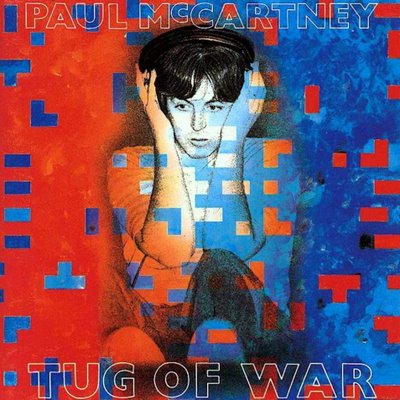
Tug of War (1982)

1. Tug of War
2. Take it Away
3. Somebody Who Cres
4. What's That You're Doing?
5. Here Today
6. Ballroom Dancing
7. The Pound is Sinking
8. Wanderlust
9. Get It
10.Be What You See
11.Dress Me Up as a Robber
12.Ebony and Ivory
It’s a strange phenomenon. Paul McCartney spent much of the 1980s floundering through a mire of half-baked concepts, overproduced singles, and largely forgettable LPs. Yet, almost inexplicably, in the very eye of this creative storm came Tug of War—a record so assured, so melodically rich, and so emotionally resonant, it seemed to emerge from an entirely different artist. Or perhaps, from the version of Paul we’d been hoping would show up all along.
The album is notable for two major reasons. First, it marked McCartney’s long-awaited reunion with George Martin, the famed Beatles producer whose absence had been sorely felt on much of Paul’s solo output. Second, and more poignantly, it was the first collection of songs McCartney would release after the murder of John Lennon. The weight of that loss hangs subtly over the record, nowhere more so than on Here Today, a sparse, moving ballad written directly to Lennon. Unlike the many public tributes being rolled out at the time, McCartney’s is intimate and restrained, capturing both affection and regret in equal measure. It is, quite simply, one of the most genuine moments of his solo career.
Much to its credit, Tug of War balances emotional weight with musical variety, and McCartney’s eclecticism is on full display. What’s remarkable is how, unlike so many of his more wayward albums, the stylistic shifts here feel cohesive rather than chaotic. There’s the gospel-tinged pop of Take It Away, the lush orchestration of the title track, and the nautical elegance of Wanderlust, a standout deep cut that remains criminally underrated.
Then, of course, there’s Ebony and Ivory, a duet with Stevie Wonder that topped charts worldwide and launched a thousand parodies. Its heart is in the right place, but its production is syrupy and its lyrical platitudes borderline painful. Far better is the lesser-known McCartney/Wonder collaboration What’s That You’re Doing?, a funkier, looser affair that actually sounds like the two artists had fun in the studio.
Elsewhere, McCartney indulges in his trademark whimsy—with mixed results. The Pound Is Sinking attempts to marry economic commentary with music hall theatrics and ends up somewhere between satire and cabaret. Ballroom Dancing is exactly what it sounds like, though somehow McCartney’s sheer melodic confidence makes it feel less like a novelty and more like a strange triumph. Only he could pull this sort of thing off with a straight face.
A late-album duet with Carl Perkins, Get It, adds a touch of old-school rockabilly to the proceedings, and serves as a gentle reminder that Paul remains at his best when bouncing off his peers. There’s a generosity in the collaboration that enlivens the track—and one wishes he had indulged more in this sort of thing in the years to come.
Tug of War may not be perfect, but it is undeniably one of the finest solo albums McCartney ever produced. Amid the clutter of the decade, it shines like a beacon—proof that the man who once redefined pop could, when properly focused, still produce music of real substance and style. The magic hadn’t gone anywhere. It had just been misplaced for a while.
Go back to the main page
Go To Next Review